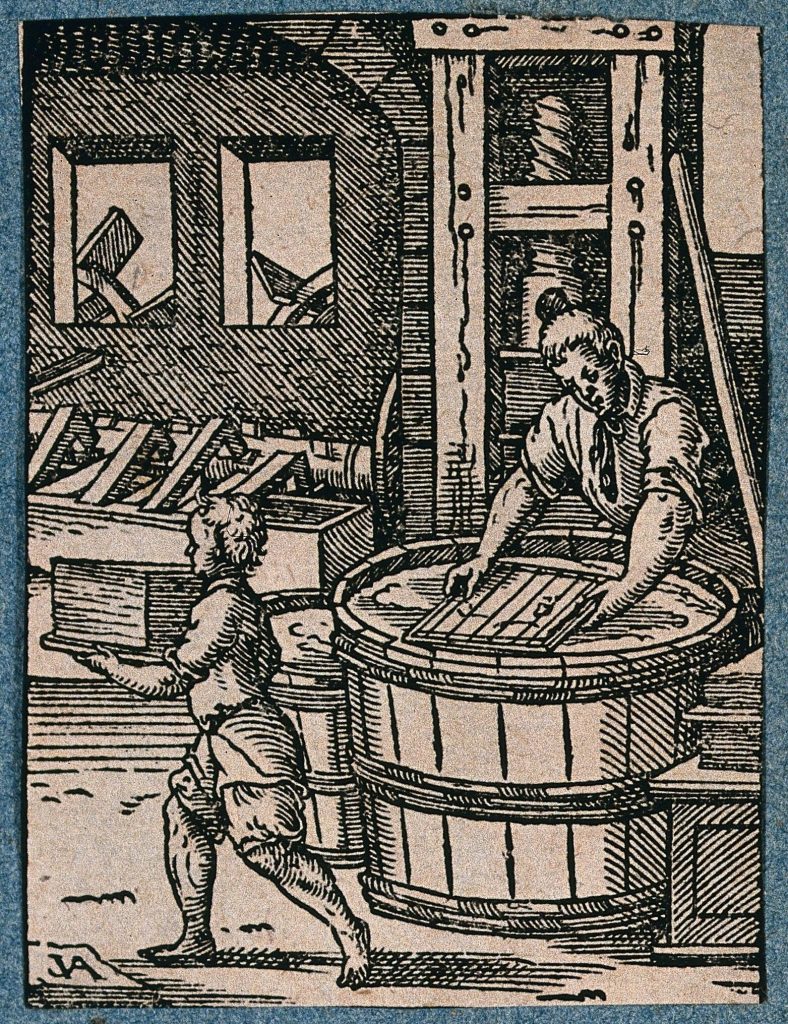RHIANNON SANDY
The paper I delivered at the conference considered how behavioural restrictions placed on apprentices could be constructed pragmatically in order to provide some freedom (or, at least, the illusion of freedom!). Originally I was planning to use this blog post to outline some further details of those restrictions, but the concluding round table discussion provided a great deal of food for thought on the topic of freedom and coercion, and so this blog has taken a slight change of direction.

Apprenticeship was a reciprocal arrangement, wherein the apprentice benefitted from rigorous technical training as well as bed, board and apparel provided by the master, and the master benefitted from the apprentice’s increasingly skilled labour. However, just because the relationship was reciprocal does not mean that it was equal. Power imbalances existed from the outset, and the terms of the apprenticeship agreement could be affected by the relative bargaining power of the parties involved. Consider the apprentice John Spynster. In 1421, John, son of Alice Spynster, agreed to serve a Windsor butcher for an unusually long term of 12 years, during which time John would learn his master’s art and reside with him.[1] John’s father was not named on the indenture, and Alice was neither described as a widow nor named alongside a husband, which suggests that Alice Spynster was an unmarried woman. In England, unlike some parts of Europe, illegitimacy was not a barrier to apprenticeship but it could affect the apprentice’s relative bargaining power.[2] John’s lengthy apprenticeship might have compensated for the fact that he was illegitimate, unable to pay a premium (a fee paid to the master for the apprenticeship), or that he did not have a male relative to negotiate more favourable terms of apprenticeship on his behalf.
My research is based on 82 apprenticeship indentures drawn up in England between 1255 and 1500; it’s difficult to make firm conclusions with little surviving evidence, but the lack of a living male relative does seem to have had an impact on the terms of apprenticeship. In the fifteenth century – when masters seem to have been keen to bind apprentices for as long as possible – the longest terms of apprenticeship can, generally, be found in apprenticeship indentures where no parent or relative is named (i.e. the apprentice placed themselves with the master, seemingly independently), or where there is some other factor which affects their relative bargaining power. One such impediment was alien status: two apprentices originating from Ireland were bound for terms of 10 years.[3] Guild and national restrictions on aliens meant that potential apprentices’ bargaining position was relatively disadvantageous, even with familial support.[4]
Apprentices from wealthier families might be able to pay their way to a more advantageous arrangement. For example, in 1393 the London goldsmiths’ new charter allowed them to set a premium of £6 13s 4d for a seven-year term (the minimum length of term set by the guilds and custom of London), or a slightly lower premium of £5 for a term of ten years.[5] Thus, those willing to pay more could benefit from a slightly shorter apprenticeship. While high premiums automatically excluded the children of less wealthy families from entering an apprenticeship with one of the more prestigious guilds, it might not exclude them from an apprenticeship entirely as long as they were willing to accept slightly less desirable conditions. Both George Unwin and Elspeth Veale proposed the existence of two-tiers of apprenticeship, which enabled less affluent apprentices to avoid paying a premium entirely.[6] This might be what we see in the apprenticeship arranged by Alice Spynster for her son John. Such arrangements made apprenticeship accessible to those from less affluent backgrounds, albeit with an additional level of coercion; the freedom to become an apprentice was accompanied by both a lengthier term of apprenticeship and the caveat that these apprentices might never become master craftsmen, or be eligible for citizenship, and therefore might never be able to set up their own workshops or take on their own apprentices. Nevertheless, they would still receive rigorous technical training which would provide them with craft-specific skills and the ability to make a respectable living, albeit without the relative freedom of working on their own account.
Rhiannon Sandy is an Honorary Research Associate at Swansea University, and was awarded her PhD in January 2022. Her thesis considered the legal and economic realities of apprenticeship in medieval England through the lens of apprenticeship contracts.
[1] Berkshire Record Office, D/EZ34/F1.
[2] P.J.P. Goldberg, ‘Women in Fifteenth-Century Town Life’, in Towns and Townspeople in the Fifteenth Century, ed. by John A.F. Thomson (Gloucester: Alan Sutton Publishing, 1988), pp. 107–128 p.115, n. 89; Sheilagh Ogilvie, The European Guilds: An Economic Analysis (Princeton, NY, and Oxford: Princeton University Press, 2019), p. 109.
[3] Somerset Archives and Local Studies, D\B\bw/1009 and D\B\bw/368.
[4] See Matthew Davies, ‘Citizens and ‘Foreyns’: Crafts, Guilds and Regulation in Late Medieval London’, in Between Regulation and Freedom: Work and Manufactures in European Cities, 14th–18th Centuries (Cambridge: Cambridge Scholars Publishing, 2018), pp. 1–21; Sylvia L. Thrupp, ‘Aliens in and around London in the Fifteenth Century’, in Studies in London History presented to Philip Edmund Jones, ed. by A.E.J. Hollaender and William Kellaway (London: Hodder and Stoughton, 1969), pp. 251–274.
[5] T.F. Reddaway, The Early History of the Goldsmiths’ Company 1327–1509 (London: Edward Arnold Ltd., 1975), p. 73.
[6] George Unwin, The Gilds and Companies of London, 3rd edn. (London: George Allen & Unwin Ltd., 1938), p. 83; Elspeth M. Veale, The English Fur Trade in the Later Middle Ages, 2nd edn. (London: London Record Society, 2003), p. 100.
